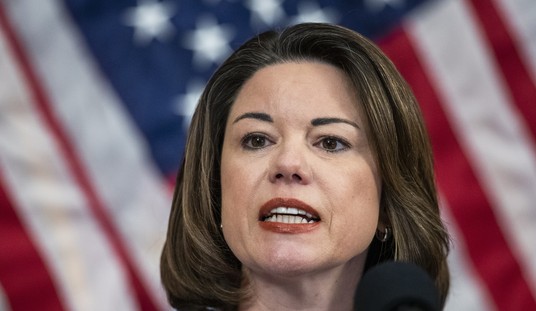
FILE – In this July 15, 2003 file photo, the Los Angeles skyline is obscured by a heavy layer of smog and fog. Los Angeles risks becoming a city in decline as it struggles with poverty, poor schooling, traffic jams and a crisis of leadership, a citizens’ panel warned Wednesday Jan. 8, 2014. (AP Photo/Jerome T. Nakagawa, File)
When the Clean Air Act was passed, the law specifically forbade individual states from setting their own standards. The reasoning was that uniformity in standards was paramount if the law was going to be enforceable. But Congress made an exception to the overall rule. If a state can show its rules are at least as effective as the national rules and are necessary “to meet compelling and extraordinary conditions,” then the law requires the EPA to grant a waiver. Ever since 1968, California has operated as a one-state fiefdom, getting waiver after waiver. Because of the size of California’s auto market, California standards have basically become national standards.
The current issue really started around 2002 when California decided to regulate “greenhouse gases” (GHG) spewed into the otherwise pristine California atmosphere by automobiles. Their special status in regards to emissions waivers effectively allowed them to begin imposing their climate idolatry on the nation.
The state, which has fought smog and toxic air pollution for decades, first proposed limiting greenhouse gas emissions from automobiles in 2002, but was denied a waiver by the Bush administration to enforce its own standards.
In 2009, the Obama administration granted California’s request and, in one of its first major climate policy achievements, negotiated a deal between the auto industry, the E.P.A., the Transportation Department and California officials to bring federal standards in line with the state’s rules.
And there is more to this story:
In 2007 Congress responded with a new law that required DOT to set a standard of at least 35 miles per gallon by 2020, and the “maximum feasible average fuel economy” after that. That same year, the Supreme Court ruled that the Clean Air Act authorized the EPA to regulate GHG emissions from cars.
The Obama administration’s tailpipe standard brought these overlapping mandates together. EPA’s regulation sets how much carbon dioxide can be emitted per mile, which matches with DOT’s increased standard for average fuel economy. It also includes a “midterm review” to assess progress. Administrator Scott Pruitt’s new EPA review, released on April 2, overturned the Obama administration’s midterm review and concluded that the 2022 to 2025 standard was not feasible.
…
The EPA has never attempted to revoke an existing waiver. In 2007, under George W. Bush, the agency denied California’s request for a waiver to regulate motor vehicle GHG emissions. California sued, but the EPA reversed course under President Obama and granted the state a waiver before the case was resolved.
California’s current waiver was approved in 2013 as a part of a “grand bargain” between California, federal agencies and automakers. It covers the state’s Advanced Clean Cars program and includes standards to reduce conventional air pollutants like carbon monoxide, nitrogen oxides and particulate matter, as well as the GHG standards jointly developed with the EPA and DOT.
None of this set well with the Trump Administration or with former EPA Administrator Scott Pruitt who thought the package of emissions standards not necessary and probably not technically feasible. In April, word leaked out that the Trump administration was looking to end California’s private auto regulatory industry:
The Trump administration has drafted a new set of regulations on planet-warming emissions from cars and light trucks that would dramatically weaken Obama-era standards. The proposal, if implemented, would also set up a legal clash between the federal government and California by challenging the state’s authority to set its own, stricter, air pollution rules.
Details of the proposal, which is being jointly drafted by the Environmental Protection Agency and the Transportation Department and is expected to be sent to the White House for approval in coming days, were described to The New York Times by a federal official who had seen them but was not authorized to discuss the matter.
Now multiple sources are reporting that the Administration will release the proposed rule changes this week:
The Trump administration will seek to revoke California’s authority to regulate automobile emissions — including its mandate for electric car sales — in a proposed revision of Obama-era standards, according to three people familiar with the plan.
The proposal, expected to be released this week, amounts to a frontal assault on one of former President Barack Obama’s signature regulatory programs to curb greenhouse gas emissions that contribute to climate change. It also sets up a high-stakes battle over California’s unique ability to combat air pollution and, if finalized, is sure to set off a protracted courtroom battle.The proposed revamp would also put the brakes on federal rules to boost fuel efficiency into the next decade, said the people, who asked to not be identified discussing the proposals before they are public. Instead it will cap federal fuel economy requirements at the 2020 level, which under federal law must be at least a 35-mile-per-gallon fleet average, rather than letting them rise to roughly 50 mpg by 2025 as envisioned in the plan left behind by Obama, according to the people.As part of the effort, the U.S. Environmental Protection Agency will propose revoking the Clean Air Act waiver granted to California that has allowed the state to regulate carbon emissions from vehicle tailpipes and force carmakers to sell electric vehicles in the state in higher numbers, according to three people familiar with the plan.
The U.S. National Highway Traffic Safety Administration will likewise assert that California is barred from regulating greenhouse gas emissions from autos under the 1975 law that established the first federal fuel-efficiency requirements, the people said.
This is headed to court and I’ll go on record predicting the outcome. District Court–California wins. Ninth Circuit–California wins. Supreme Court–Trump wins.
Conservatives should not be stampeded into supporting California over some bogus federalism argument. This is a textbook example of what the Commerce Clause was trying to prevent. Here California is imposing its social and political desires upon the entire nation simply because of its size. And besides, you can never go too wrong by foiling whatever California is scheming to foist on the rest of us.













Join the conversation as a VIP Member